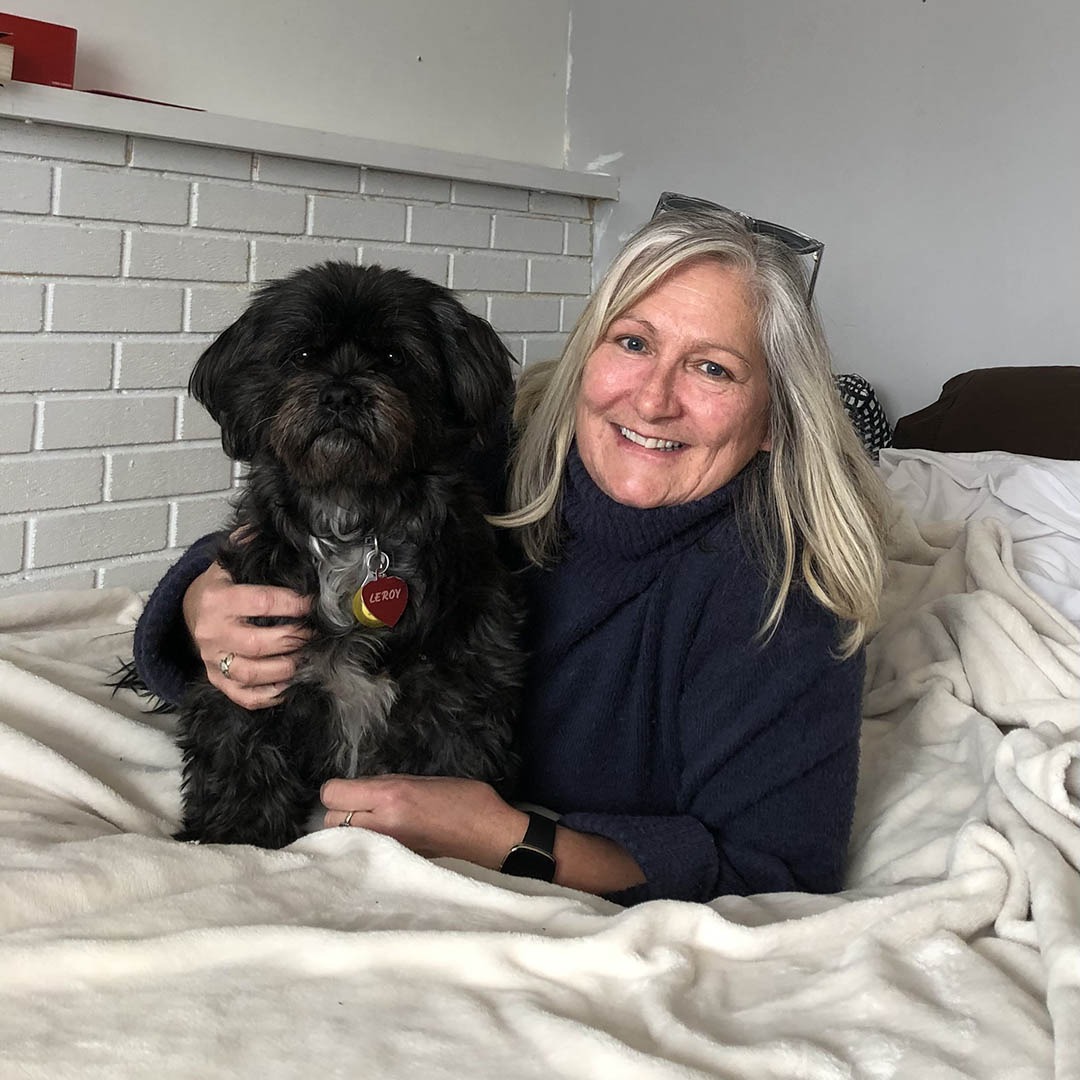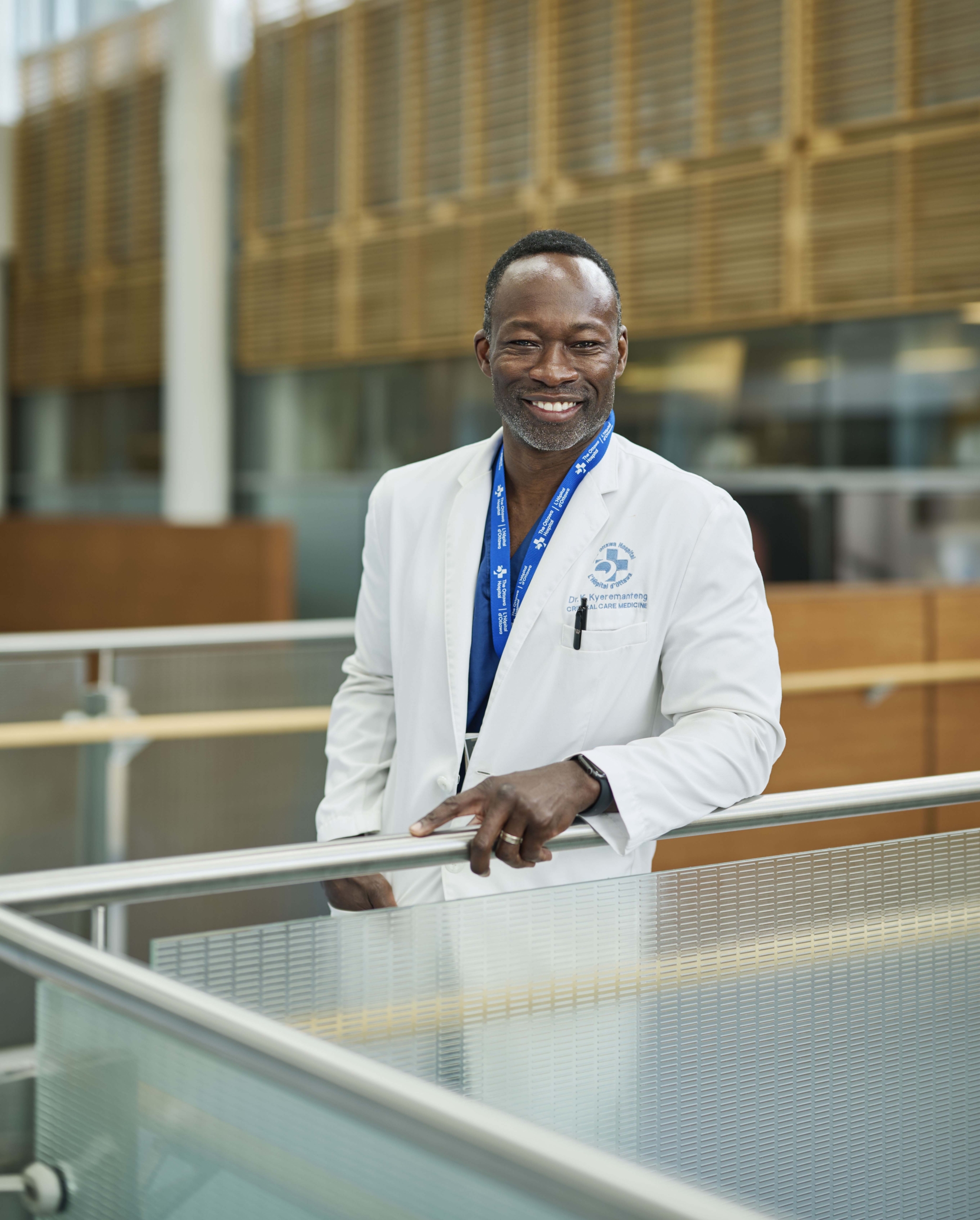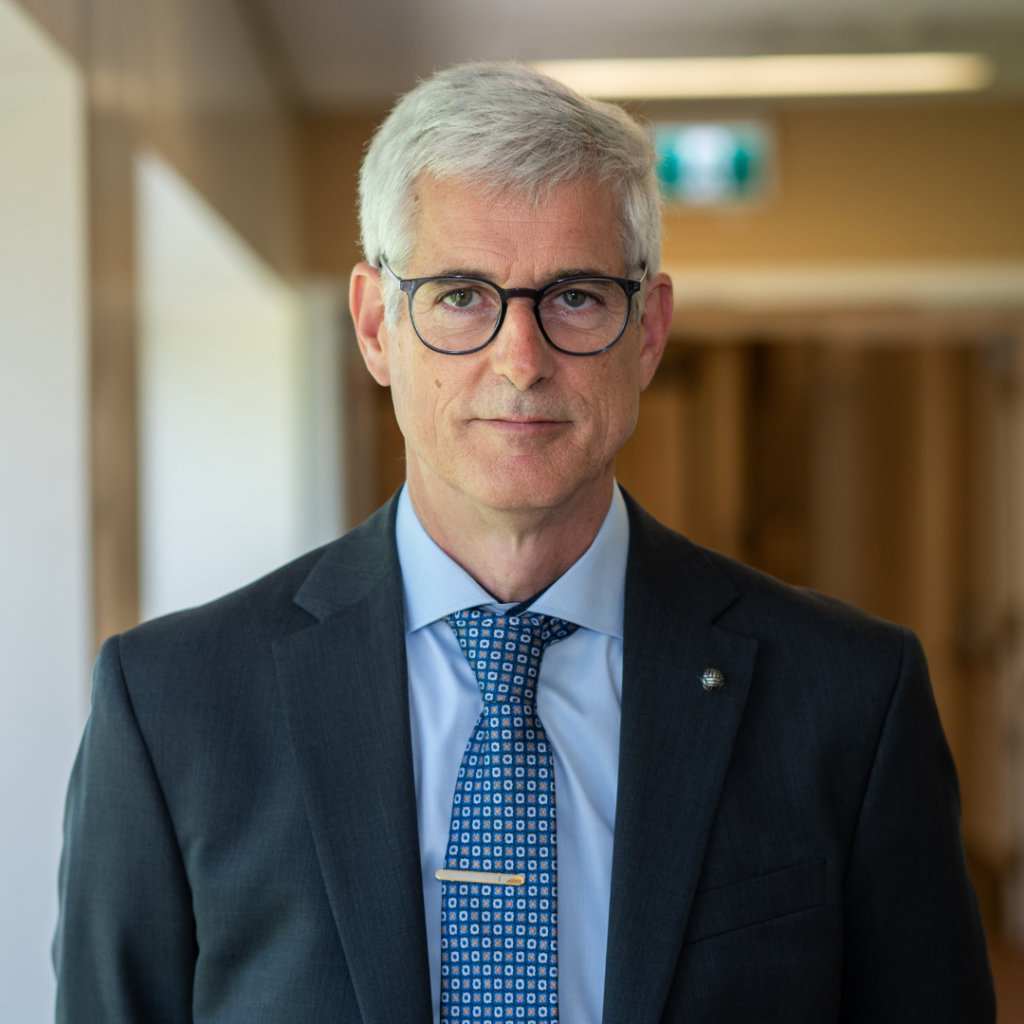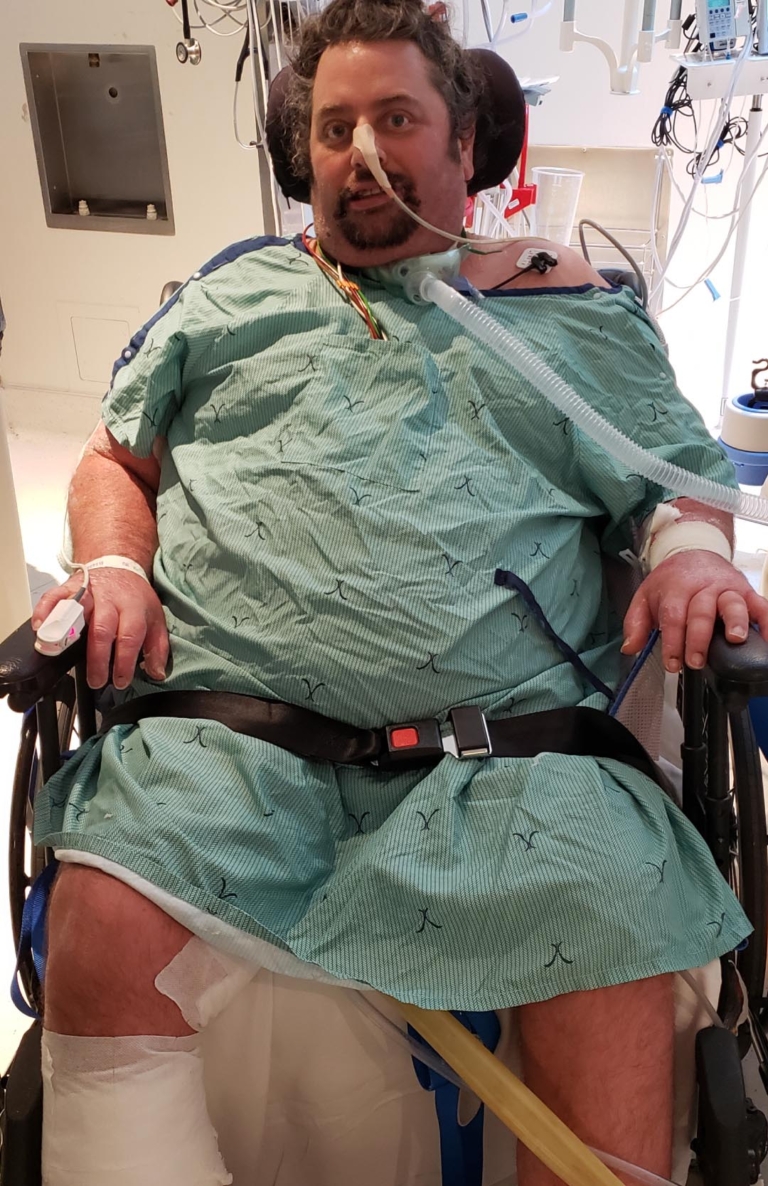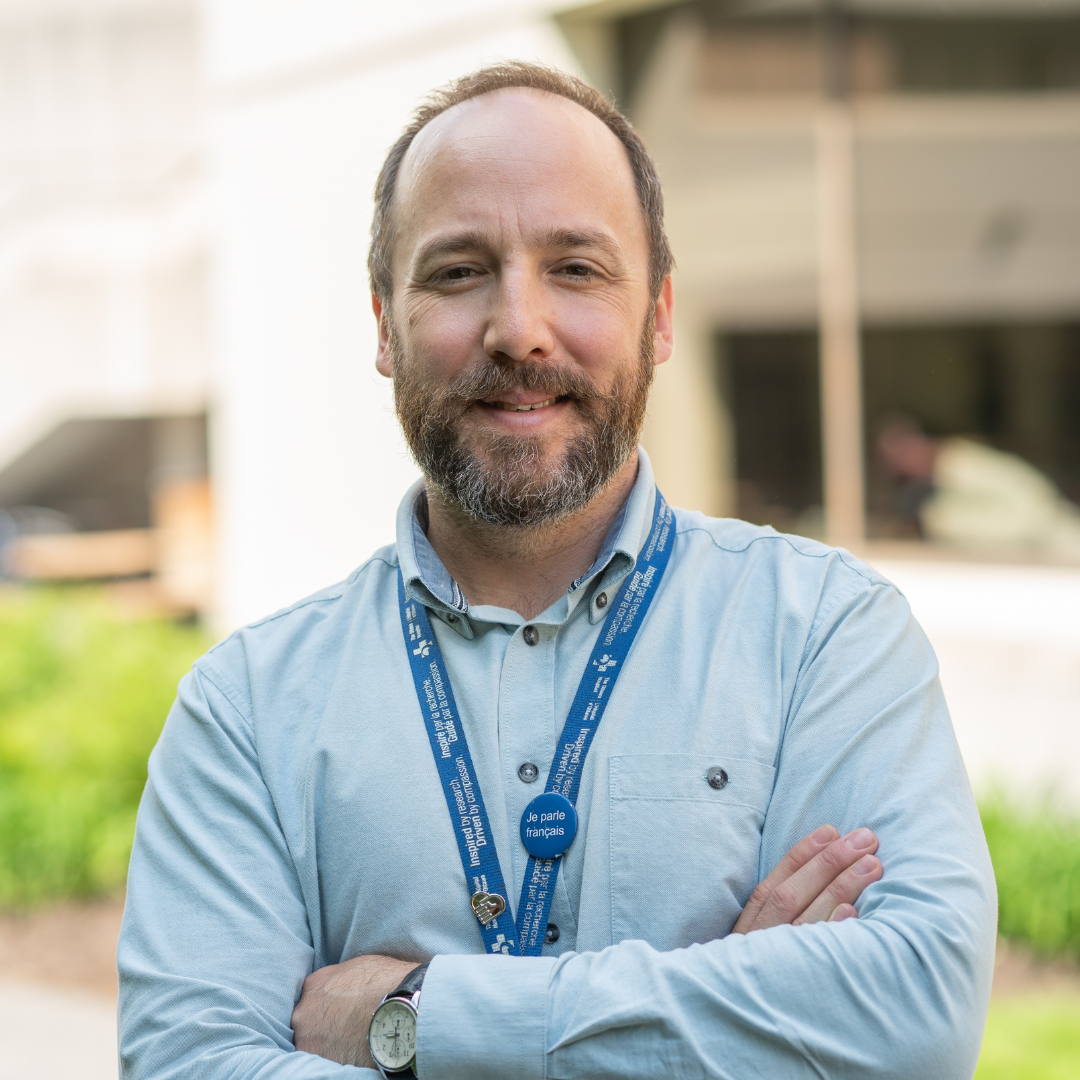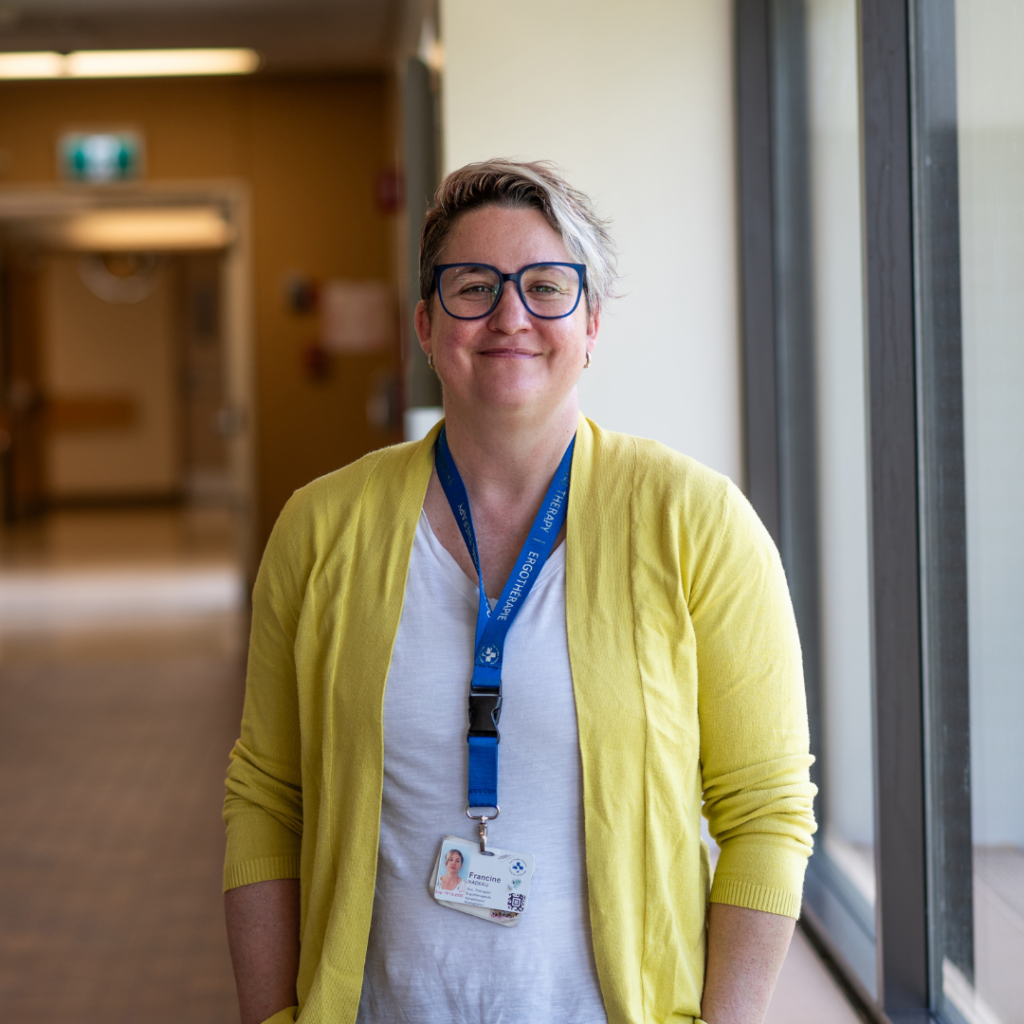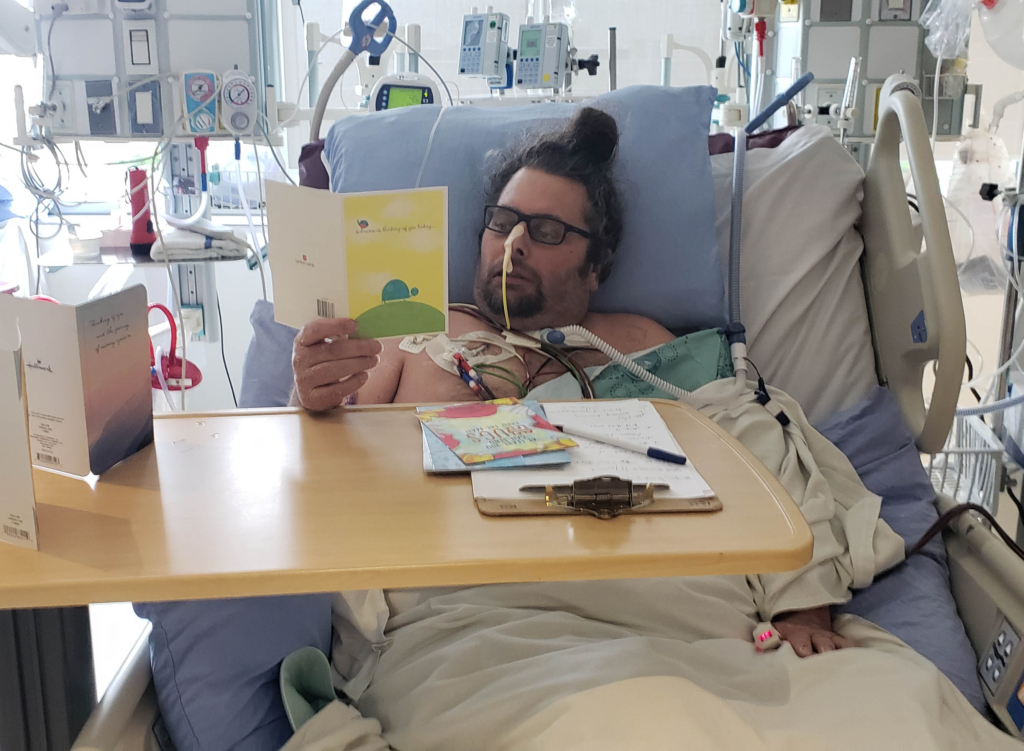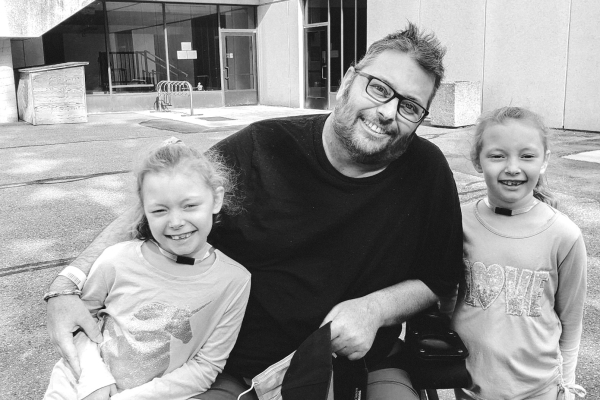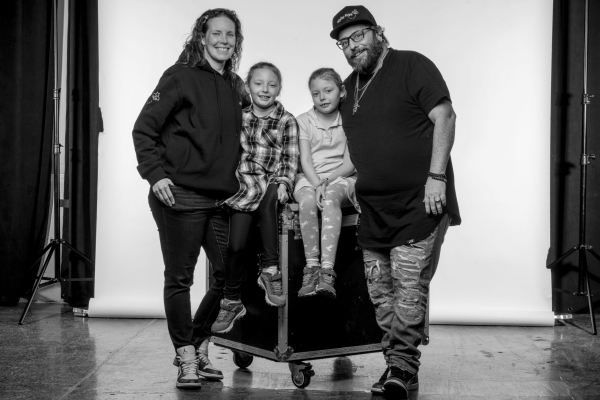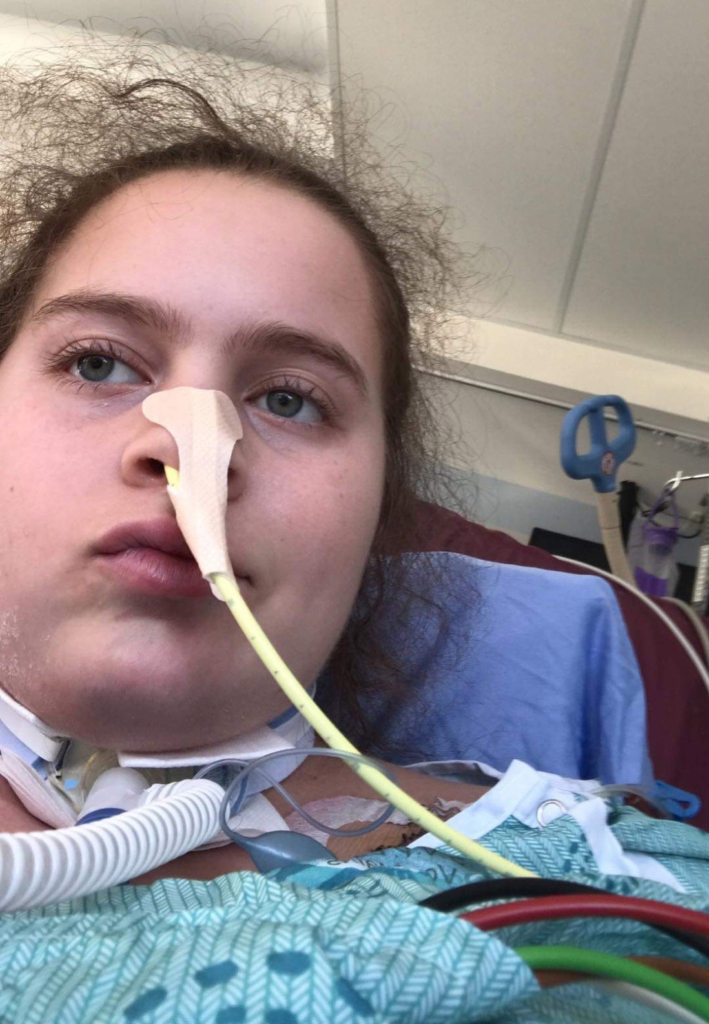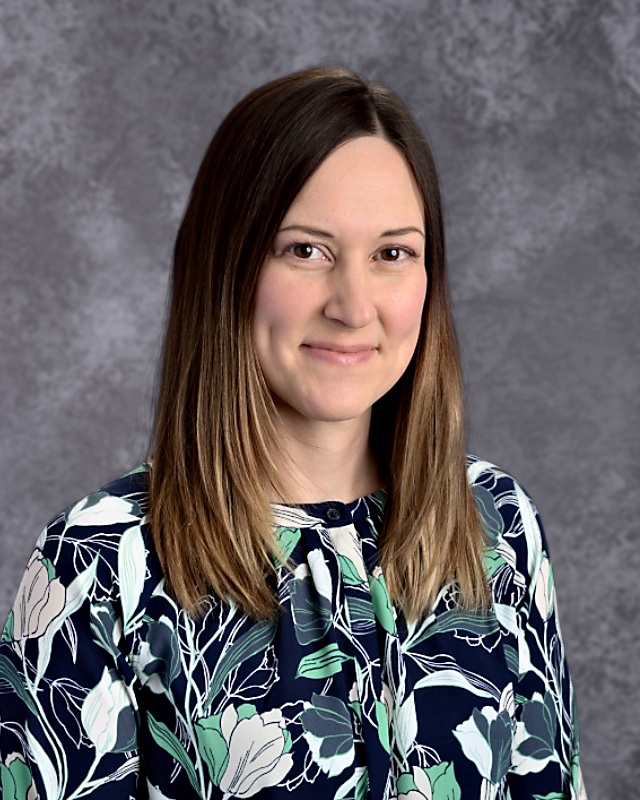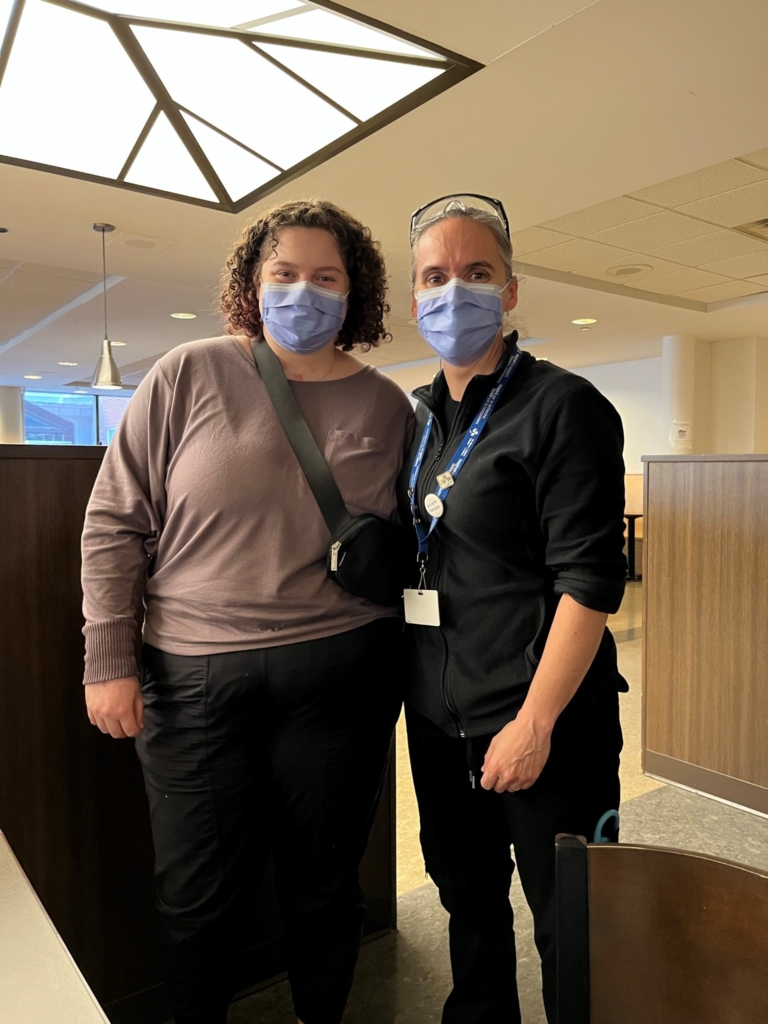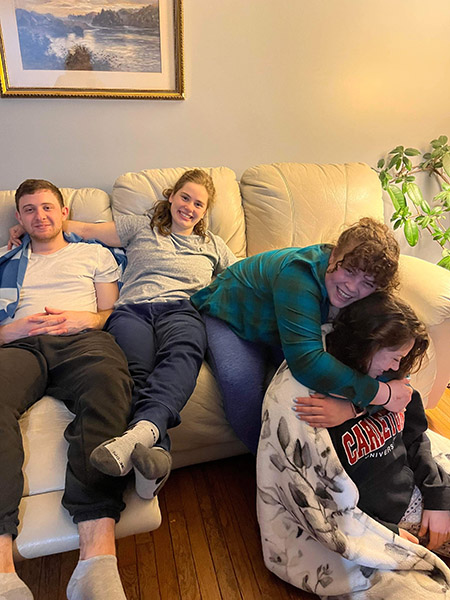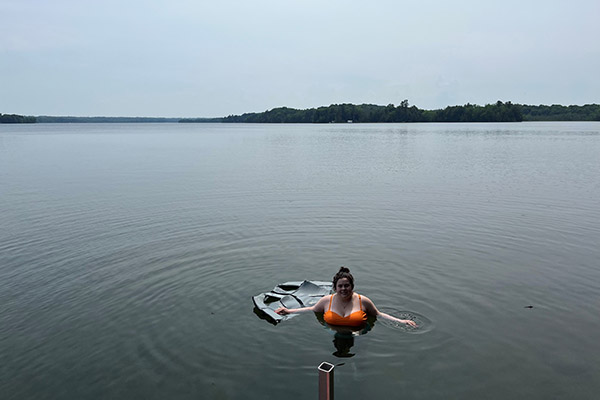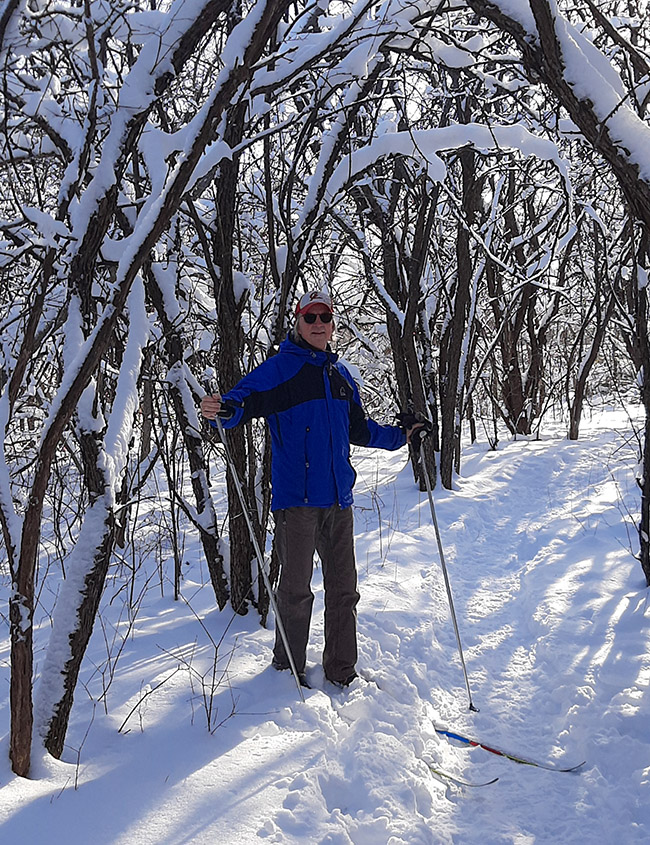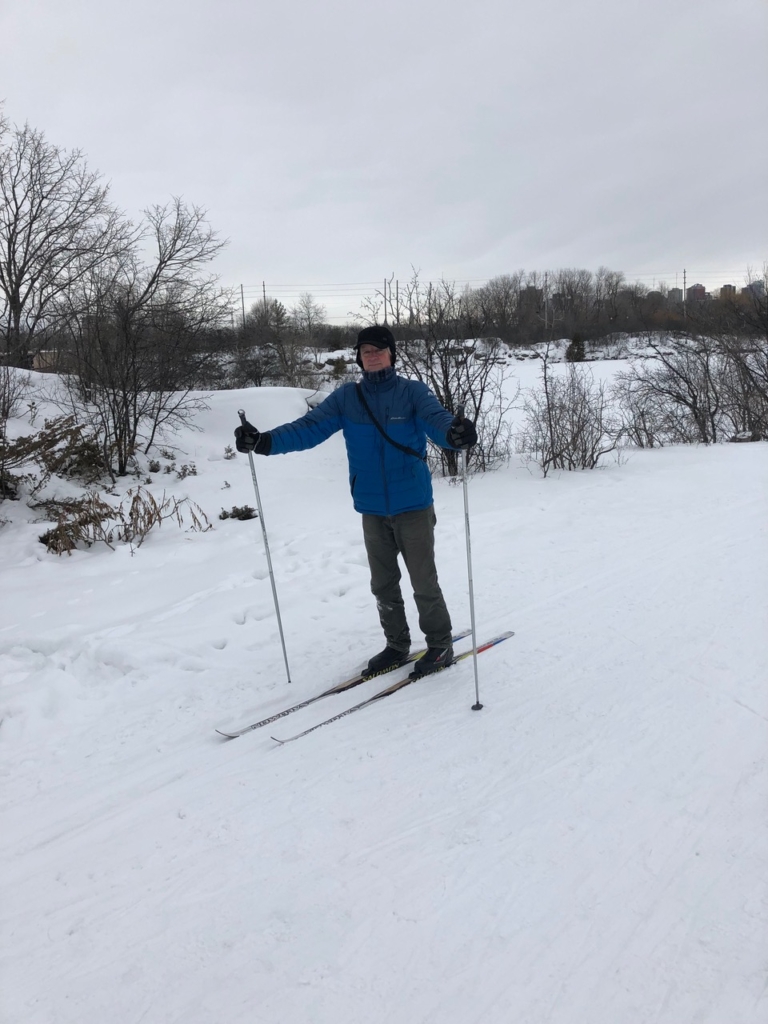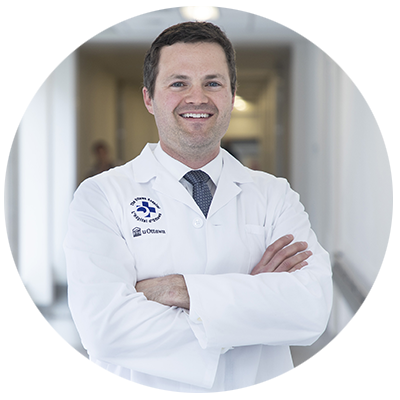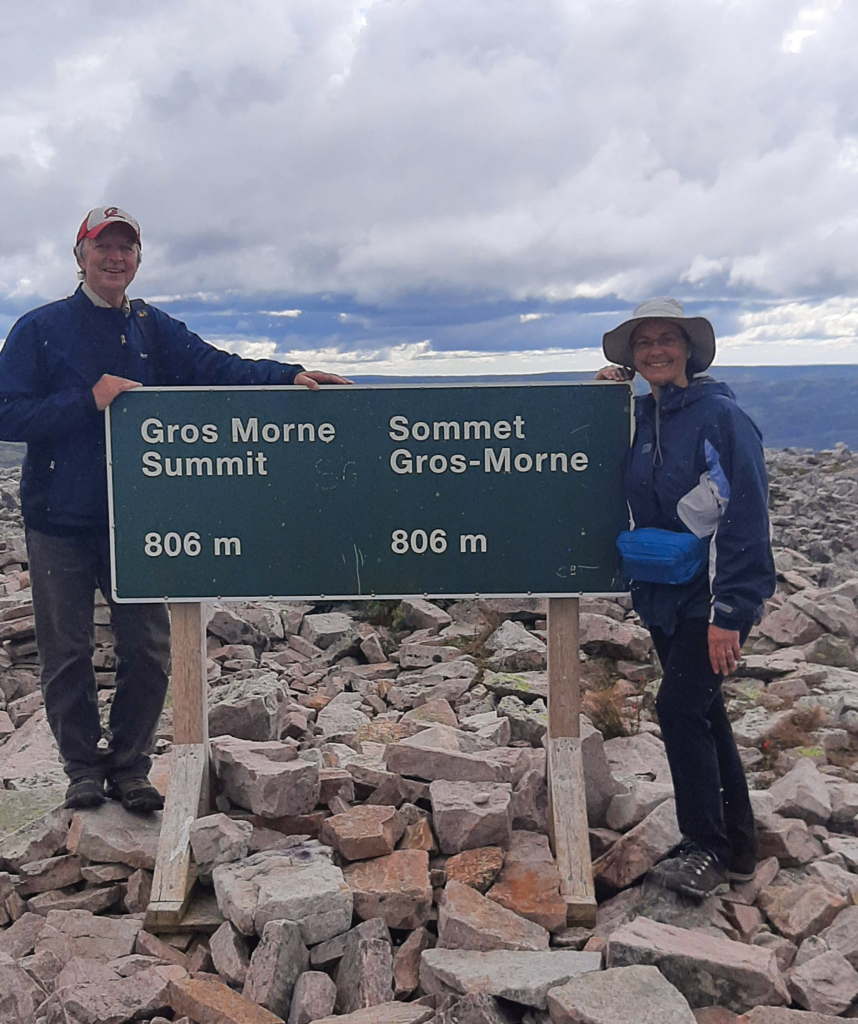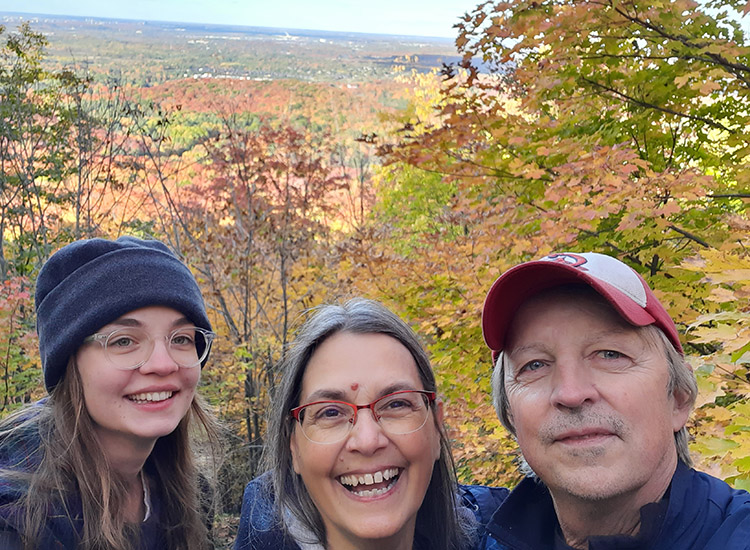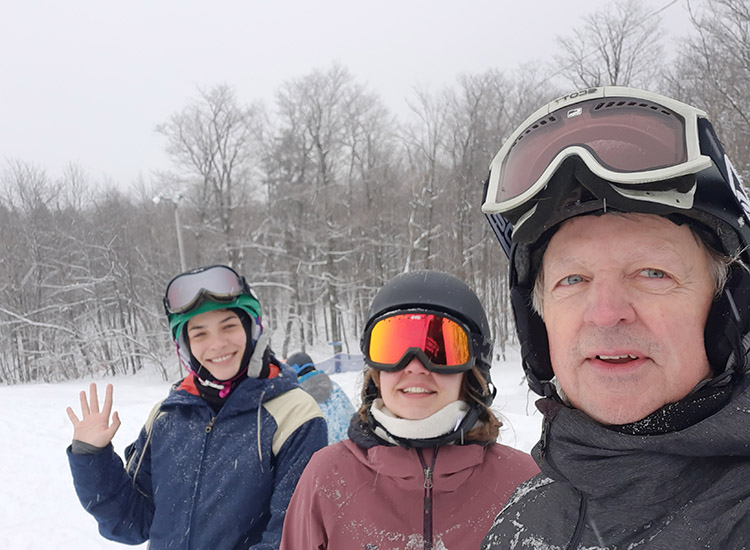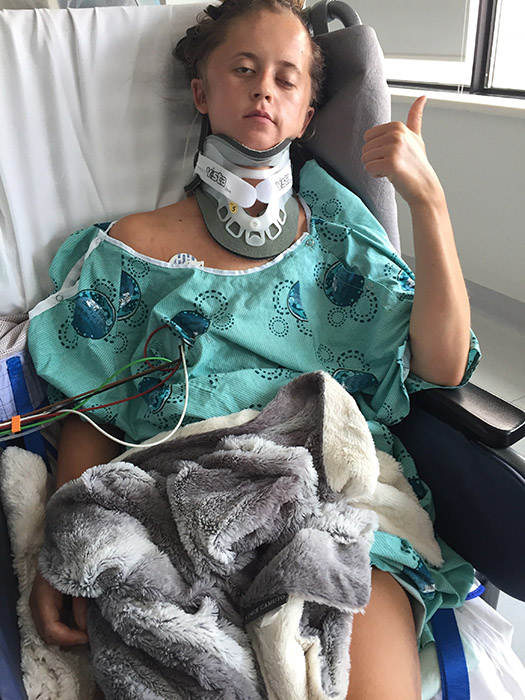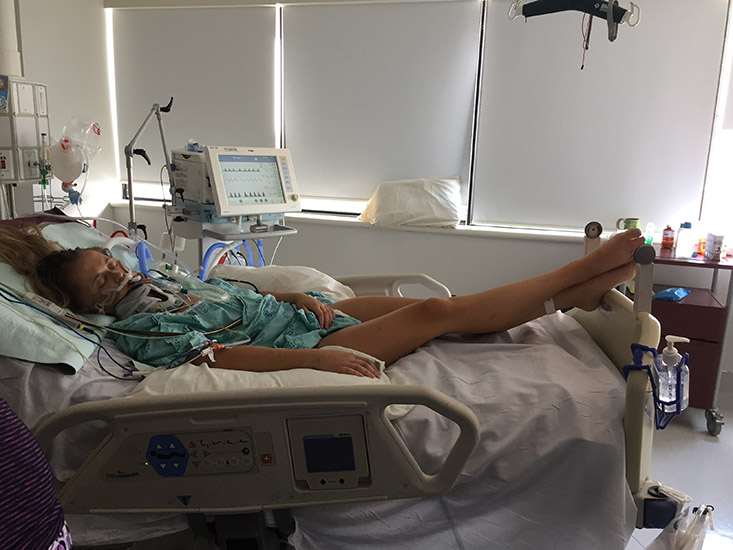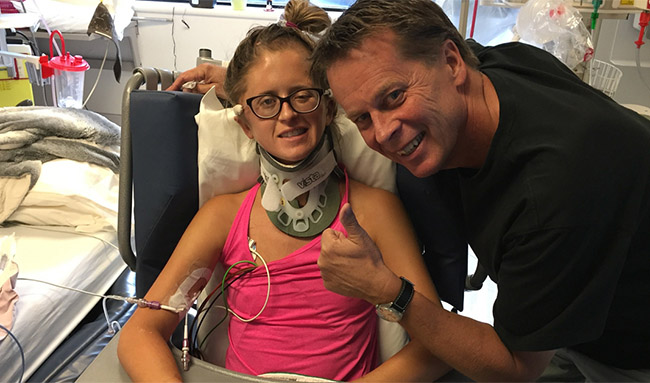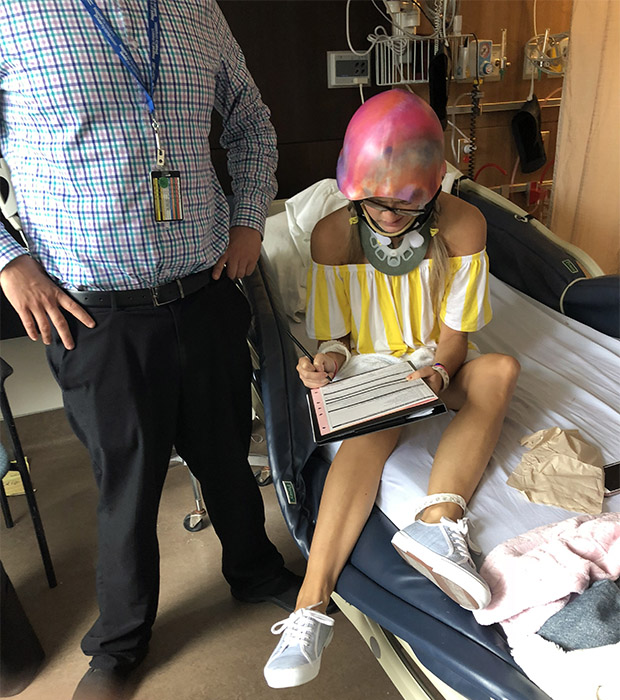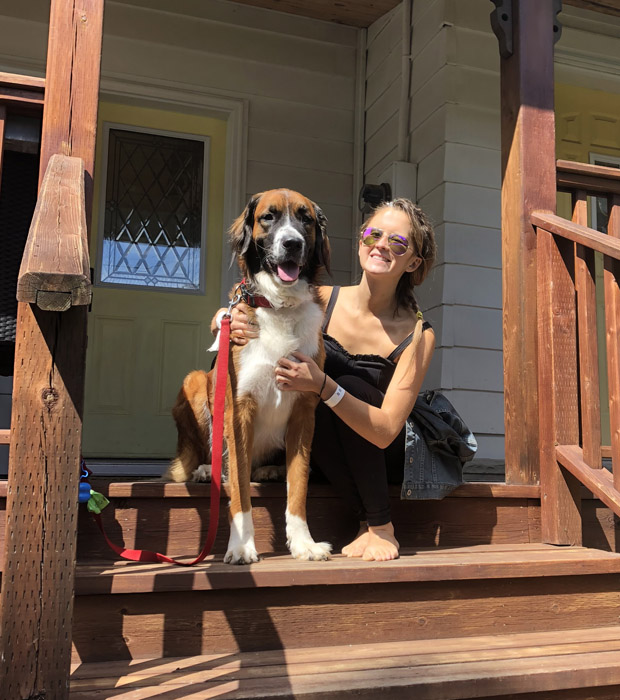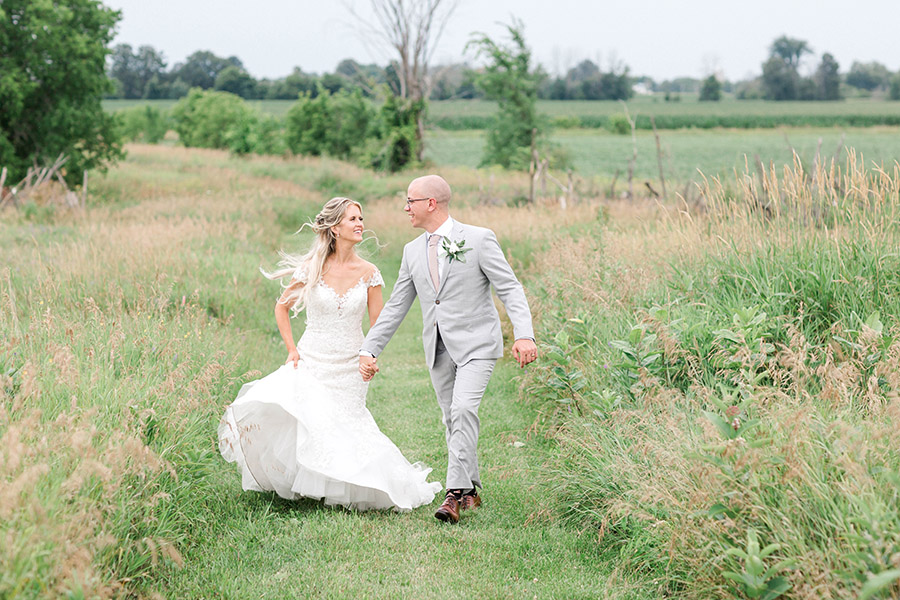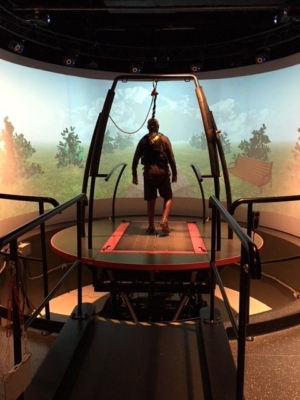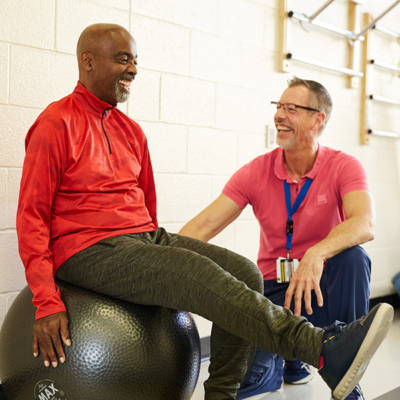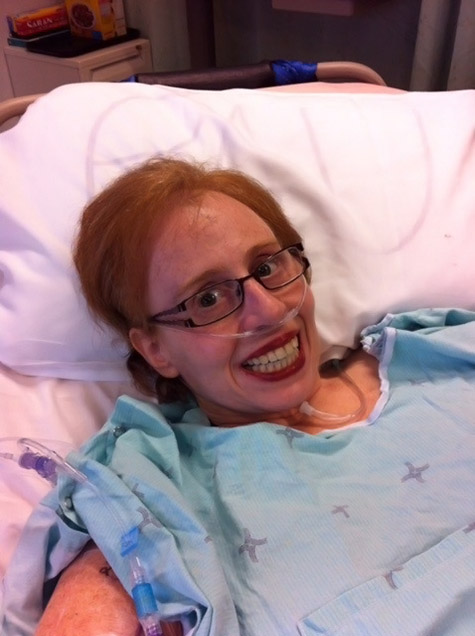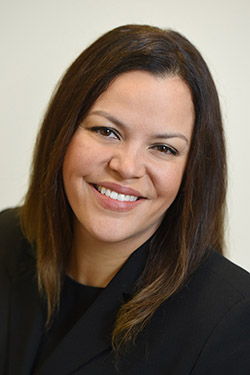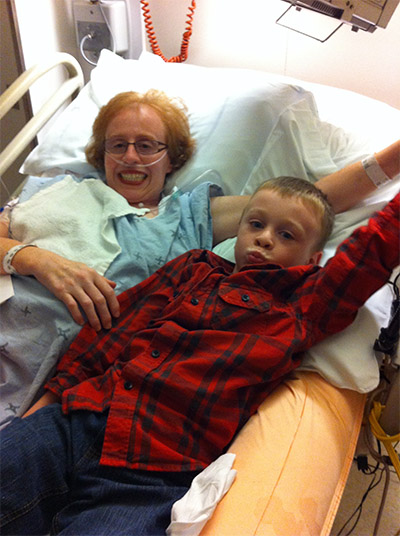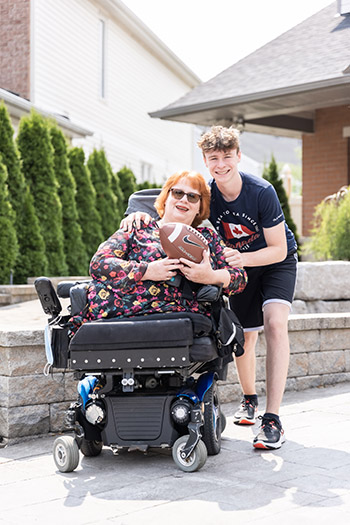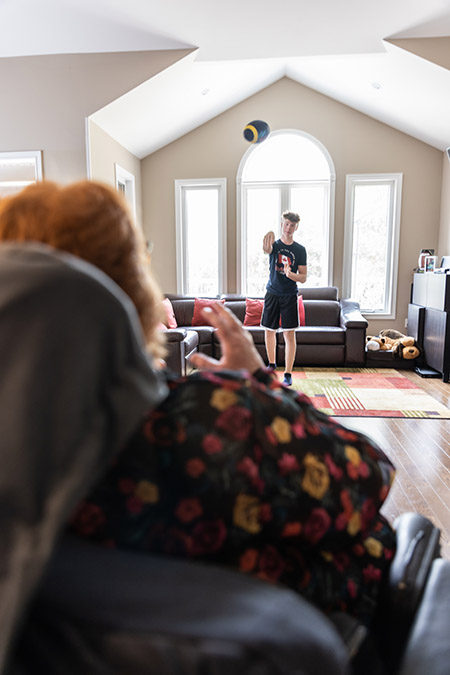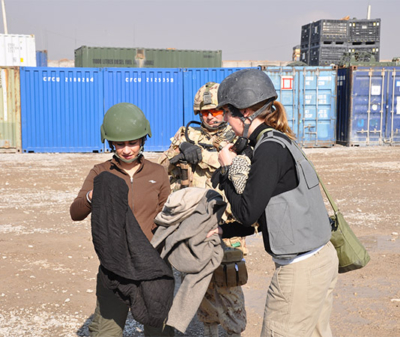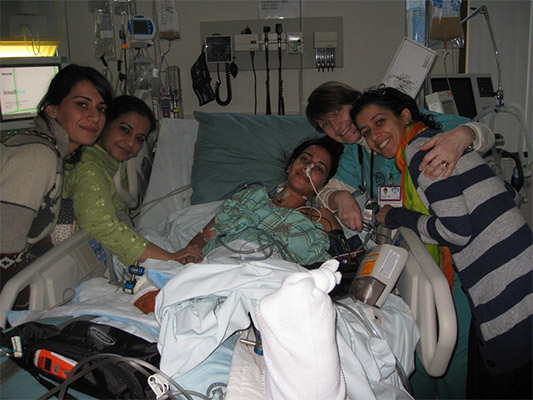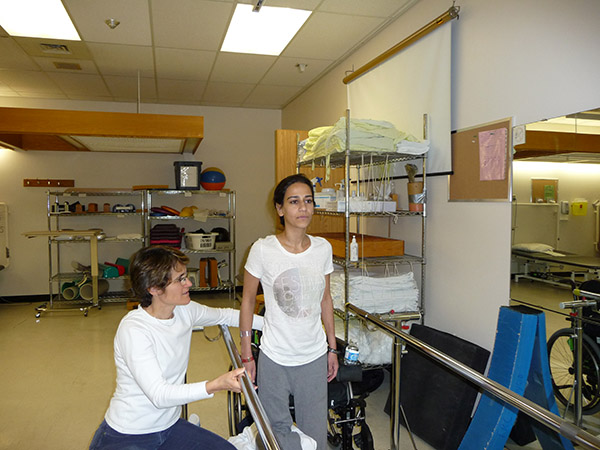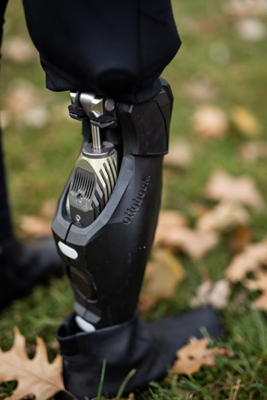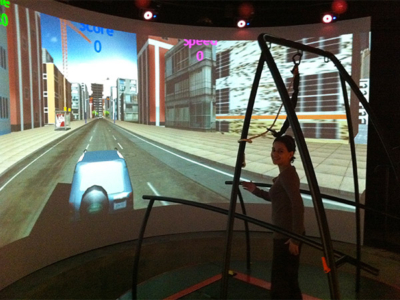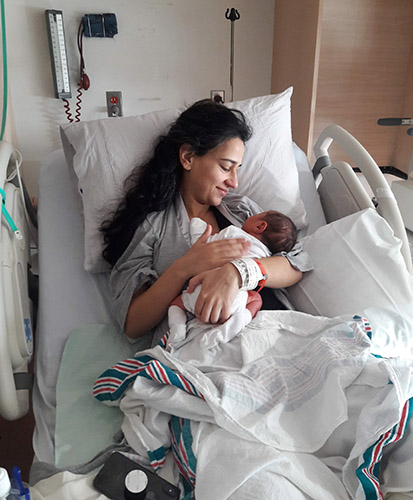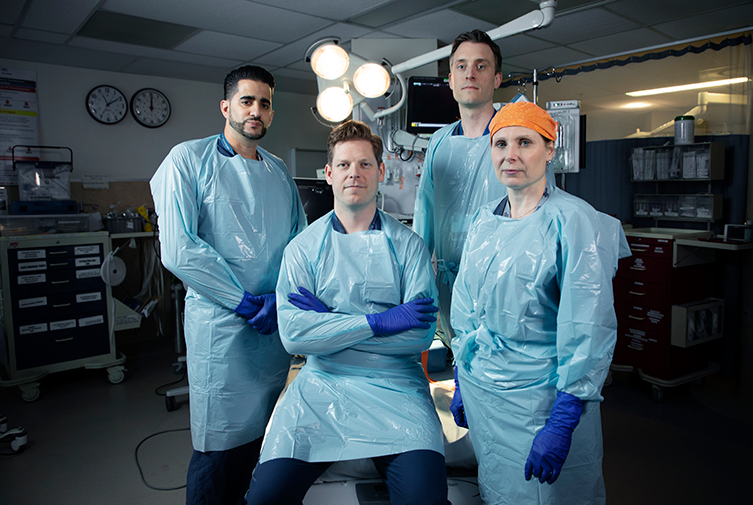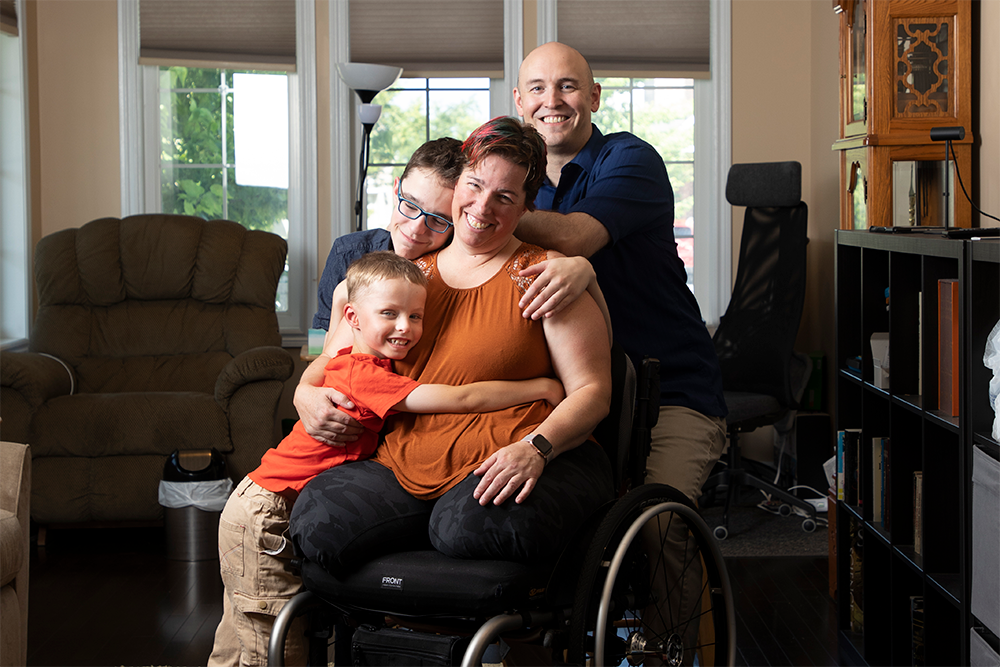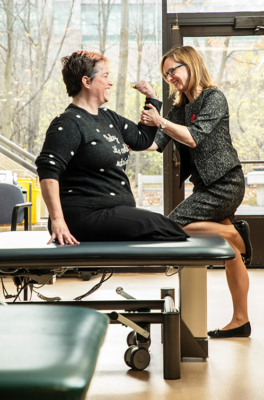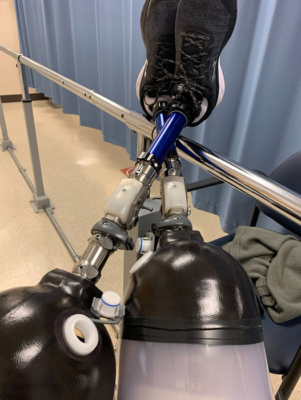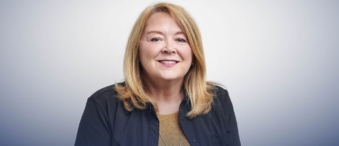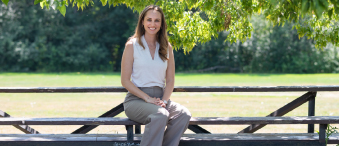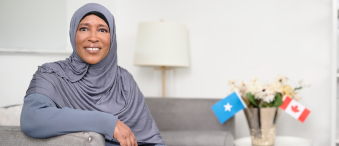Published: December 2024
When Sophie Leblond Robert was rushed to The Ottawa Hospital’s Civic Campus — which houses the Champlain Regional Stroke Network — time was not on her side. Sophie was 35 years old, an interior designer, and married with two children, when she suffered a brain stem stroke. But our team of internationally recognized stroke experts were ready.
The excruciating ordeal began in May 2020, when she felt a pain in her neck. She went to her family doctor first, who prescribed some medication, but it provided little relief. The same result occurred after seeing her chiropractor. Then, she felt an odd sensation in her neck as she turned to check on her kids in the car one day. A week later, as she was gardening in her backyard in mid-June when she turned and felt a tweak in her neck — she knew something was wrong. But Sophie had previously suffered from seizures, so she assumed that’s what was happening.
Upon her arrival at the Civic’s Emergency Department, she was met by the stroke team, who assessed that Sophie had a tear in her vertebral artery, which runs from the back of the neck to another key artery known as the basilar. When a tear like that happens, it can cause clots to form inside the arteries and those clots can dangerously block blood flow to the brain.
Lifesaving clot “busting”
The situation was urgent and the clots were life-threatening. Sophie was immediately treated with a strong clot busting medicine and prepped for a thrombectomy to have the clots removed from the main artery in the back part of the brain.
As Dr. Daniel Lelli, a neurologist, neuro-ophthalmologist, and a member of the stroke team explains, if that artery is clotted, a patient can’t survive.
“You need the brainstem to be able to breathe and to be alive. So, the team performed a mechanical thrombectomy and removed the clot, but unfortunately, Sophie kept having repeat clotting blocking the blood flow to the brain every time the clot was removed,” explains Dr. Lelli.
The quick-acting stroke team decided to use multiple stents to force the main artery, the basilar artery, and vertebral artery open. Thankfully, that quick intervention reestablished blood flow and saved Sophie’s life.
Locked-in syndrome
Because of the stroke she suffered, Sophie faced a new and frightening challenge — a condition called locked-in syndrome. This can happen when a stroke damages the brain stem, causing complete paralysis while still conscious.
“The brain stem is a highway of nerves that go from your brain down to your arms and legs, and it also controls many other things, like moving your mouth and eyes, and swallowing,” says Dr. Lelli.
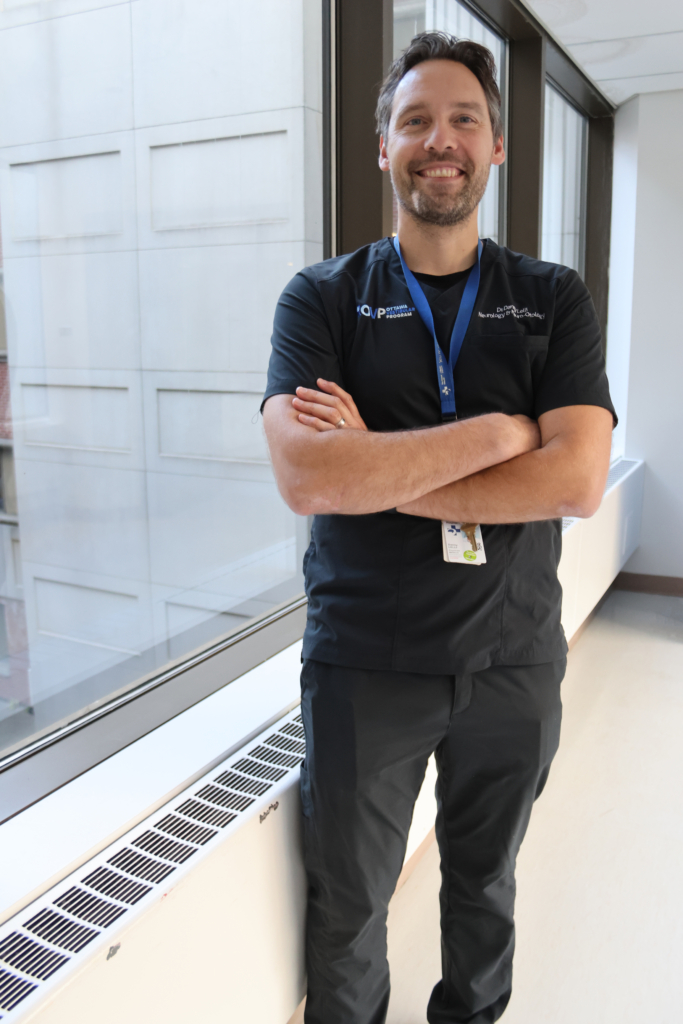
“The only thing I could do was open and close my eyelids. I couldn’t do anything else."
— Sophie Leblond Robert
For Sophie it was a horrifying ordeal. “The only thing I could do was open and close my eyelids. I couldn’t do anything else. I could feel pain, but couldn’t communicate that.”
Sophie was moved to the neurological acute care unit, which is the highest level of care outside the intensive care unit, where she had a tracheostomy — this would help get air to lungs — and a feeding tube.
Doctors didn’t know if she’d survive, and her chances of ever being able to move again were slim.
Sophie was trapped inside her body and her family had no idea if she had any awareness of what was going on around her. That’s when her loved ones started to look for a way to communicate with her.
Sophie’s devoted mom, Suzanne Leblond, recalls very early on she asked her daughter some questions — she asked her daughter to blink twice for “no” and once for “yes.” She asked if her name was Joanne — Sophie blinked twice. Then she asked if her name was Mary. Two more blinks. When she asked if Sophie was her name — one blink.
“So, it was very, very evident that we could communicate with her, but it took a lot out of her, so we just had to take our time in between each question,” says Suzanne.
What is locked-in syndrome?
Long road to recovery
This was the first chapter in a long and painful road towards recovery, with so many unknowns. But Sophie had an integrated care team and her mom and husband with her around the clock.
It wasn’t until about the four-week mark of Sophie’s hospitalization that the next positive sign happened. One day, she was able to move one finger on her left hand — a small but important step. It also provided a little comic relief. “The first thing I could move was my left middle finger. So, I was known as the F*** you girl for a good two months,” laughs Sophie.
"We started by showing her and her family ways to start moving the limbs to try to get the brain to relearn."
— Linda Powers
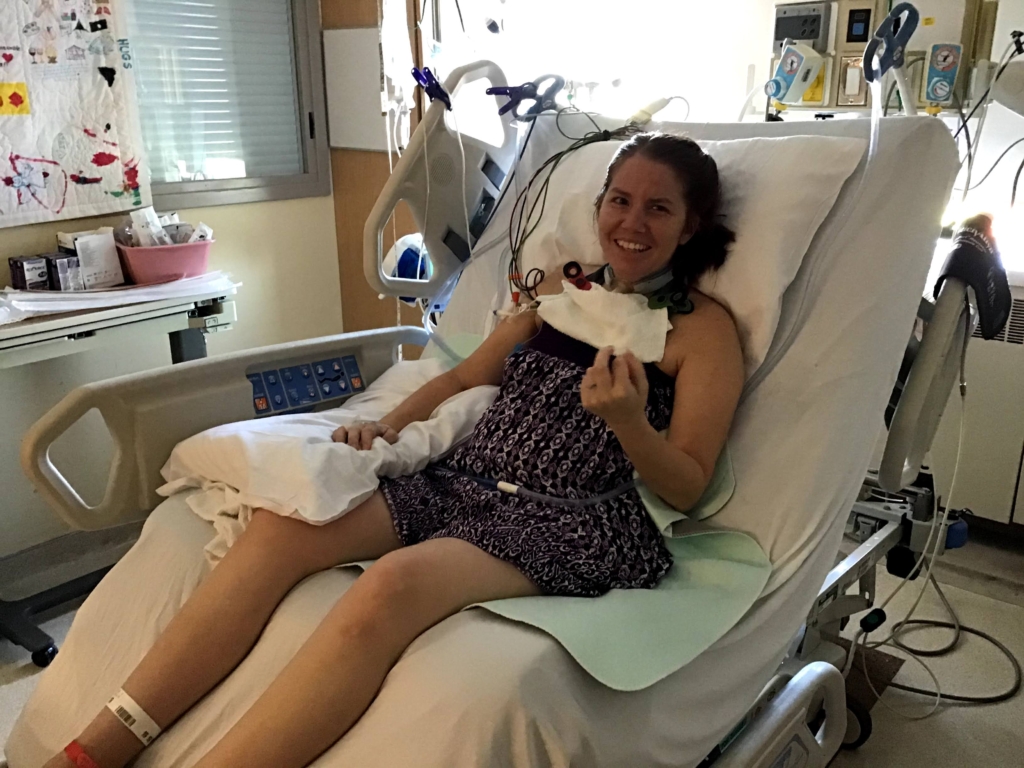
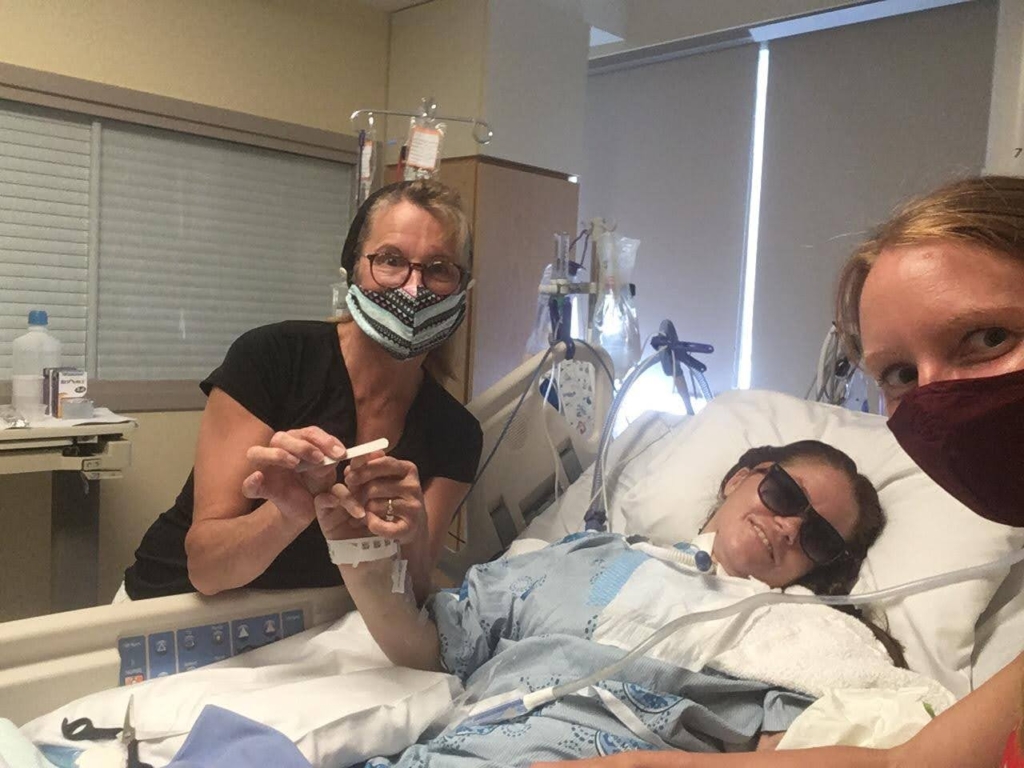
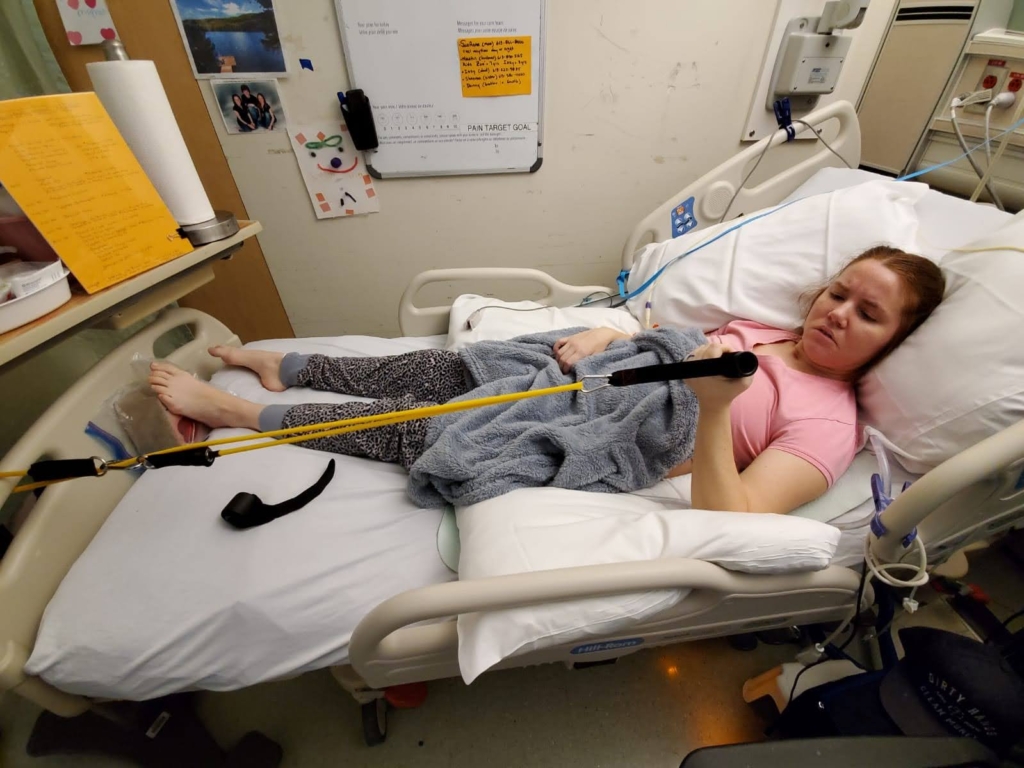
It’s around that time when Linda Powers, a physiotherapist specializing in stroke, first met Sophie. She’s cared for patients at The Ottawa Hospital for 28 years, and most of that time she’s worked on the stroke unit. Linda brought a great deal of experience to this young patient’s rehabilitation.
“Sophie’s left side was stronger from the very beginning. We started by showing her and her family ways to start moving the limbs to try to get the brain to relearn,” says Linda.
Admittedly, this is where a significant amount of trust is built between the patient and the care team. It starts with getting the patient to sit at the edge of the bed and learning to control their sitting balance. “That was one of the first things we did with Sophie, and she needed full support — she couldn’t even hold up her own head.”
Next, it was getting Sophie out of bed. As Linda explains, this is done using a sling like a hammock, that lifts the patient up to a chair. It was another two months before they tried the pivot transfer, where Sophie would put partial weight on a leg to move from one seat to another.
It was a slow process. “But she had all the right things in place, her age, the intervention of the stroke team in those early days, the physio of course, because the more you do in the first six months, the more likely your recovery is going to be,” says Linda. “She also had an incredible family to support her when we weren’t there.”
A full team approach to recovery
After six weeks in hospital, Sophie was still having a hard time controlling her eyes because of the stroke, so Dr. Lelli was brought on to Sophie’s case because of his specialty as a neuro-ophthalmologist.
“When she tried to look somewhere, Sophie couldn’t control the movement. Her eyes would overshoot and undershoot where she wanted them to go, and then she would get dizzy. She had a lot of trouble focusing as well. This was all because of the different muscles and the control mechanisms affected by the stroke,” explains Dr. Lelli.
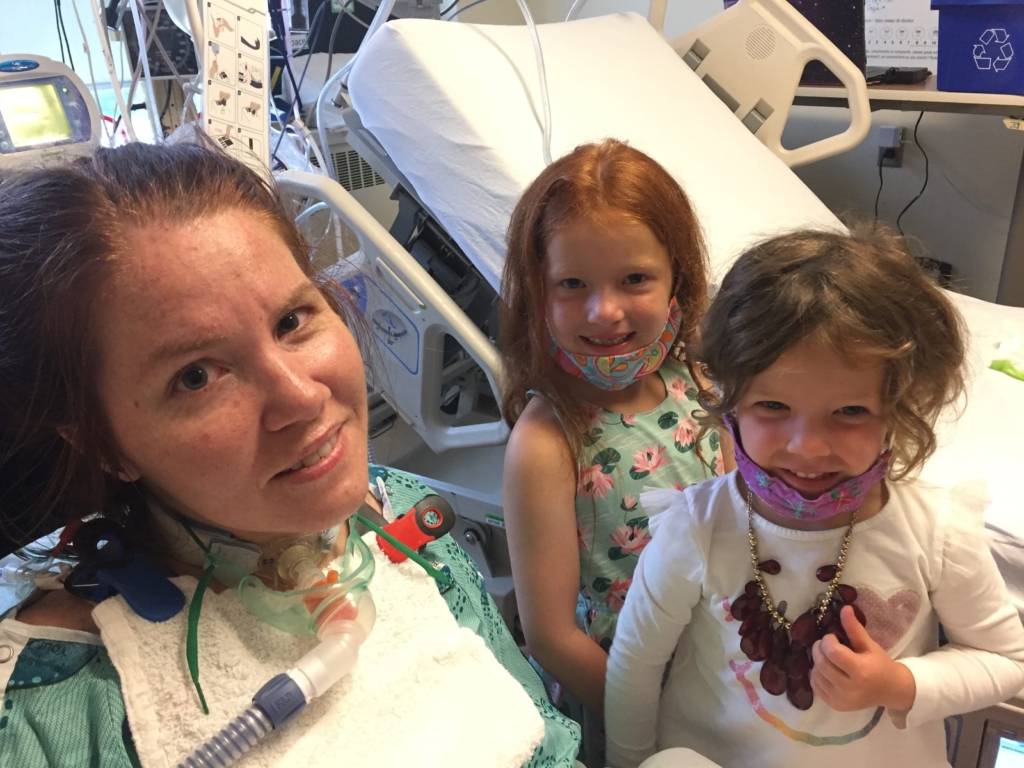
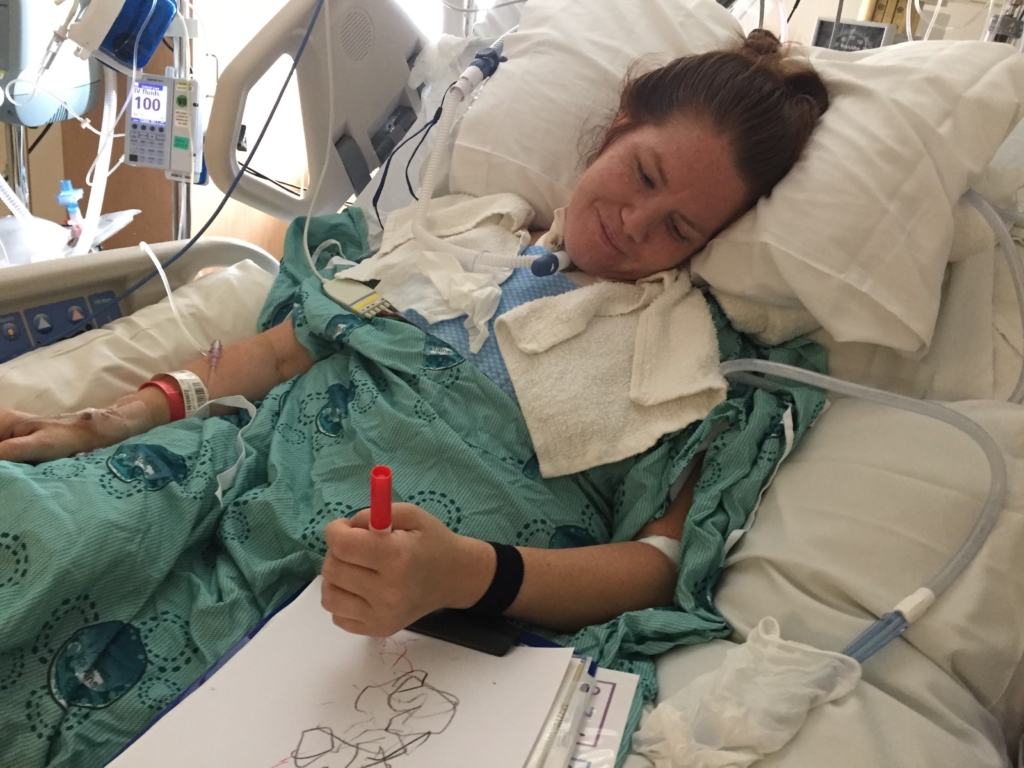
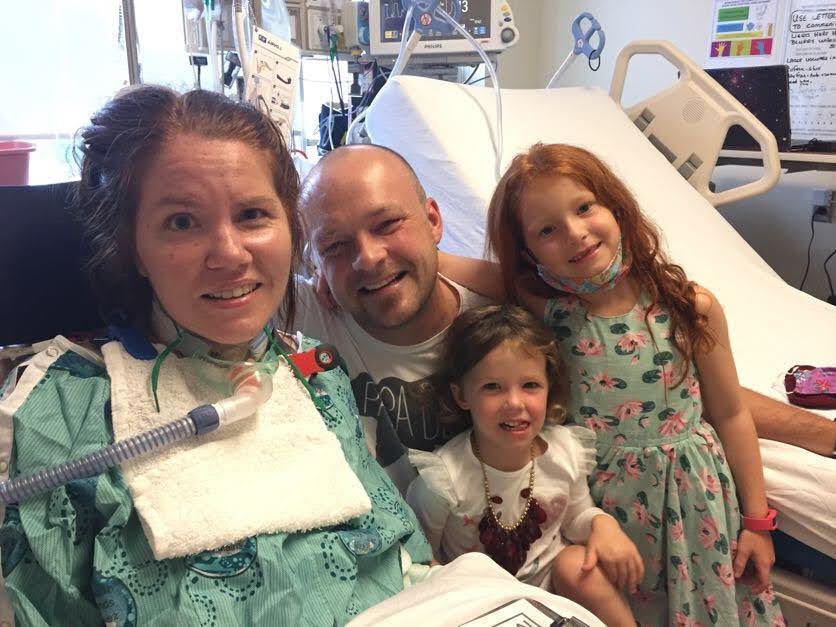
"I said if I'm doing this, I'm doing this to the fullest. I'm going wear those high heels shoes again. I'm going to drive again. I’ve got this. I'm doing this."
— Sophie Leblond Robert
He worked with the occupational therapists and physiotherapists to ensure Sophie had exercises to try and get control of her eye movement again. A shining example of the full team required to come together to aid in the recovery of a patient after suffering from a severe stroke.
Sophie’s sheer determination was a great factor in this long road to recovery. While initially she worried about being a burden to her family, she wanted her life back — every aspect of it, even though the early odds were against her. “I said if I’m doing this, I’m doing this to the fullest. I’m going wear those high heels shoes again. I’m going to drive again. I’ve got this. I’m doing this.”
Then, after four-and-a-half months on the neuro unit, facing an uphill battle and a laundry list of complications as a result of the stroke — she fought through it all and was moved to The Ottawa Hospital’s Rehabilitation Centre.
That’s where a whole new team stepped in to provide care, including Andrea Chase, a physiotherapist caring for neurological patients. She’s been a part of our hospital’s team for about 20 years. She explains that normally after suffering a stroke, patients go to the Bruyère Centre, but because of the locked-in syndrome, Sophie required the specialized team at our hospital.
"Feisty and determined"
When Andrea first met Sophie, she recalls that while she had many difficulties, she was feisty and determined. At this point, Sophie had difficulty moving her limbs, controlling her vision — sometimes just even looking in a busy environment was too much. She had a soft, weak voice and it was difficult to talk or cough or even breathe. She also had difficulty swallowing.
“Basically, cognitively she was aware. She was herself, but all the systems we take for granted as healthy people were affected. She had many really complex needs.”
— Andrea Chase
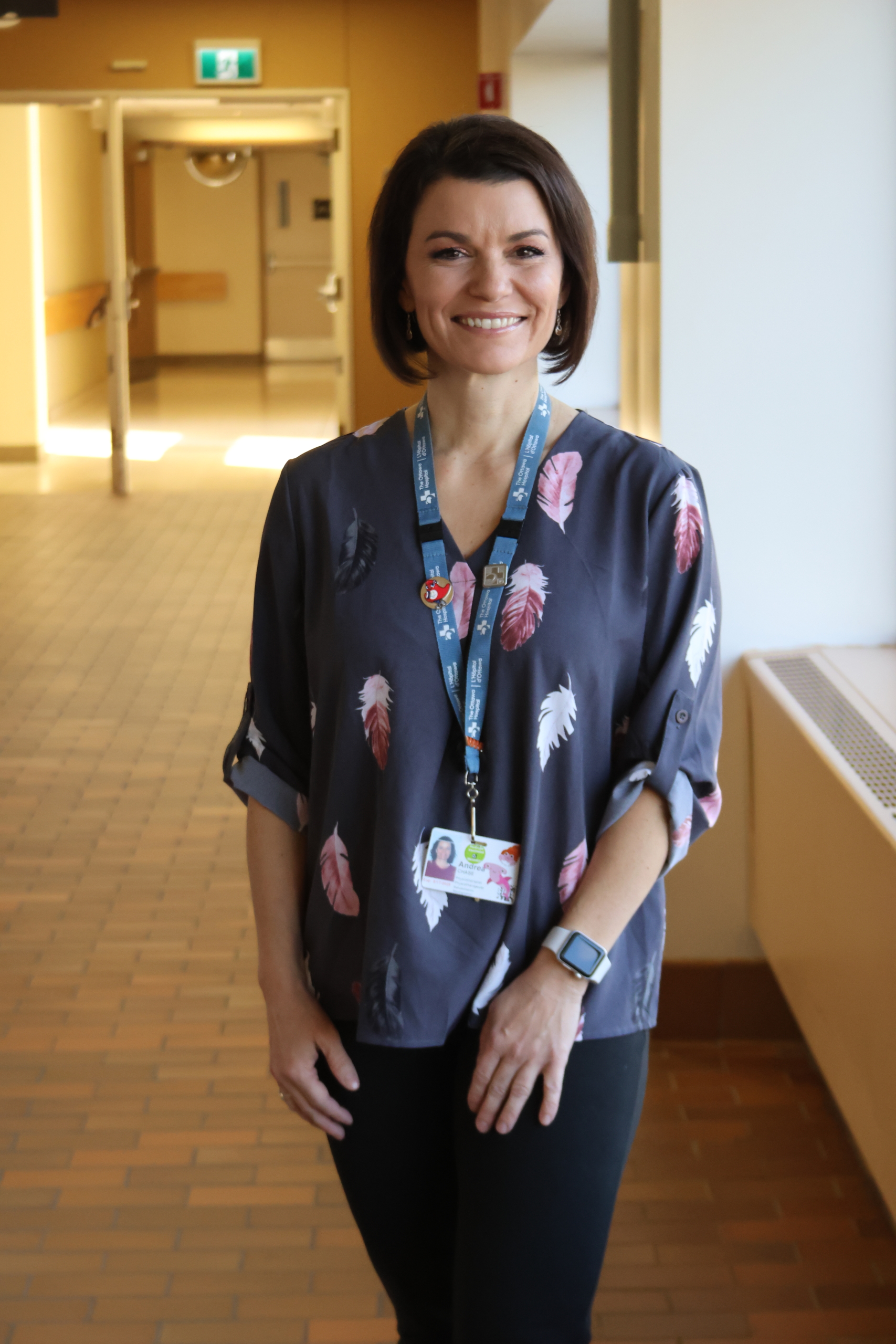
That’s where setting goals becomes a very important part of the care program. A patient is starting from the very beginning in many cases according to Ms. Chase. “We start working on simple things, almost back to child development. We might need multiple staff to work on simple things like sitting up, rolling over in bed. Then we gradually work at adding on more like standing and then walking. When she was able to get a little bit more mobile to stand and take some steps, we did take her to our virtual reality lab.”
Known as the CAREN system — it’s state-of-the-art technology that allows patients to explore and interact with room-sized 3D scenarios. The 180-degree screens work in combination with a moving platform, a remote-controlled treadmill, and surround sound. Patients are in the safety of a harness as they regain skills, strength, and confidence.
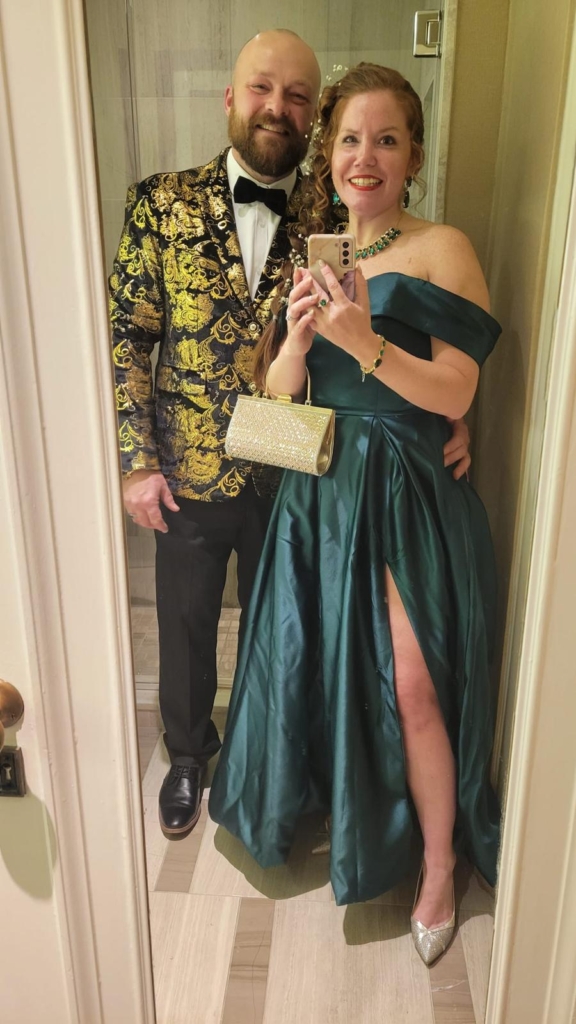
An "extra magical" discharge from the hospital
With each day, Sophie defied the odds, getting better and better. Soon, she set out a new goal for herself. “She really wanted to go home for Christmas,” says Andrea. “And we got her home to her kids and family. It was an extra magical discharge date for sure.”
“I just needed to be home. I wanted to make it fun for them that mommy was home.”
— Sophie Leblond Robert
It was magical indeed. Because of the pandemic, Sophie had only seen her two daughters three times in six months. “I just needed to be home. I wanted to make it fun for them that mommy was home.”
It was that sheer determination of a mother wanting to reunite with her children that pushed Sophie. She went from just walking a few steps on the parallel bars when she first arrived at the Rehab Centre to making sure she could climb steps to get home because she lived in a two-story house. She continued to defy the odds. “I’m a stubborn redhead, and I wanted to prove I could do it.”
The milestones along the way have all been significant, including her first words, for the second time in her life. Thanks to the help of her speech therapist, Karen Mallet, learning to talk again was just as special to Sophie’s mom as it was the first time. “I’ll always remember the first time, about three months into her care, she was able to whisper ‘hello’. It was amazing,” says Suzanne.
Speaking led to re-learning French and she’s also back to painting, and getting her driver’s license again — and oh yes, she’s back to wearing high heels.
For Dr. Lelli, to see how far Sophie has come since the summer of 2020, is amazing. He points to the stroke team that is ready to provide the most advanced treatments. “The stroke code mobilized all the resources of the hospital for that patient. It’s a wonderful team to be part of and it’s really a well-oiled machine, because the quicker we get her treated, the more likely it is that we limit the damage, and that we can enable a recovery like this one.”
That exceptional care continues along the way of the patient’s recovery. “I didn’t know if she was going to get out of a bed again — that’s how bad it was,” says Dr. Lelli. “It’s really amazing, and it’s because of all those treatments she got, from the mechanical thrombectomy to the efforts that she’s put in and all the people that have worked around her, like the rehab specialists — and because she just wouldn’t give up.”


